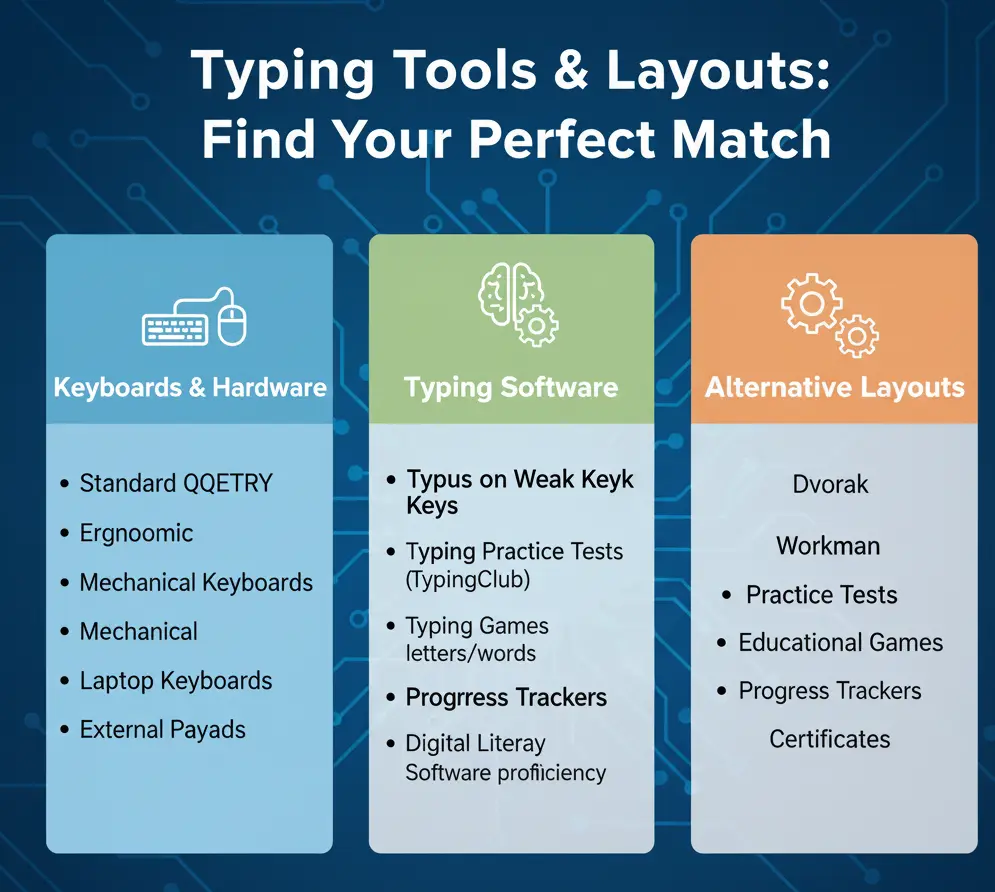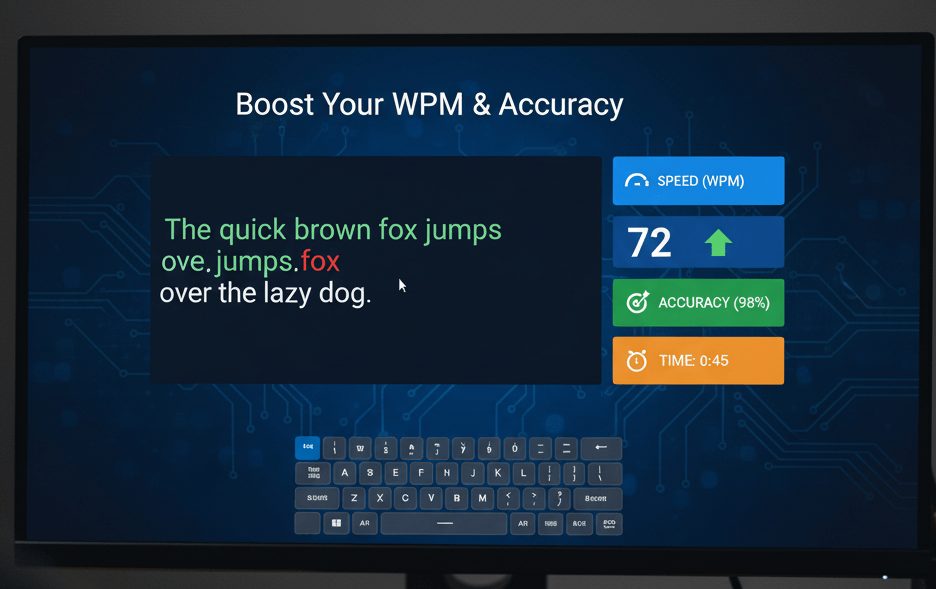Typing Tools & Keyboard Layouts
When you start learning to type, it is easy to get lost. You see people with fancy, colorful keyboards. You hear about strange layouts like "Dvorak" or "Colemak." You wonder: Do I need special tools to type fast? The short answer is no.
Your typing speed comes from practice, not from a $200 keyboard. A good typist can be fast on a cheap laptop. A bad typist will still be slow on the best keyboard in the world. Let's break down what matters, and what doesn't.

Does Your Keyboard Matter?
Yes, but only for comfort. The keyboard is your main tool. Finding one that feels good to you can help you practice longer. There are three main types you will see.
1. Membrane Keyboards
This is what you find on most laptops and standard office keyboards. The keys are soft, quiet, and sit on a rubbery sheet. They are cheap to make and work perfectly fine. Most people learn to type on these.
2. Mechanical Keyboards
These are very popular with gamers and programmers. Each key has its own physical switch underneath. This makes them "clicky" and loud. Many typists love them because they give strong physical feedback. You know exactly when you have pressed a key. They are durable, but can be expensive and loud.
3. Ergonomic Keyboards
These keyboards are designed for comfort and safety. They are often "split" down the middle. This lets your wrists stay straight instead of bending inward. They look strange, but they are great for preventing wrist pain (like Carpal Tunnel Syndrome). If you plan to type for 8 hours a day, one of these is a good investment.
The Verdict: The best tool is the one you are comfortable with. For most students, the keyboard on your laptop or in your school's computer lab is all you need.
The Big Debate: Keyboard Layouts
This is the most confusing part. A "layout" is just how the letters are arranged on the keys. You probably only know one: QWERTY.
QWERTY: The Accidental King
Look at the top-left row of letter keys on your keyboard. It spells Q-W-E-R-T-Y. This is the standard layout all over the world. As we covered in our typing history page, this layout was designed in the 1870s to prevent typewriters from jamming. It was not designed to be fast. It was designed to be slow and awkward. But it got here first, and it stuck.
Dvorak: The Speed Demon
In the 1930s, a man named August Dvorak designed a new layout. He built it for pure speed and comfort. The Dvorak layout places all the most-used letters in English (like vowels) on the home row. This means your fingers barely have to move. You can type thousands of words just by wiggling your fingers. Fans of Dvorak claim it is much faster and more comfortable.
Colemak: The Modern Mix
Colemak is a newer layout that tries to be the best of both worlds. It is efficient like Dvorak, but it keeps some of the common QWERTY keys. For example, the shortcuts for Cut, Copy, and Paste (Z, X, C, V) are in the same place. This makes it a little easier to learn for people who already know QWERTY.
So... Should You Switch Layouts?
For 99% of students, the answer is no. Stick with QWERTY. Why?
- It's Everywhere: Every phone, laptop, and library computer in the world uses QWERTY. Knowing it means you can type anywhere.
- The Method Matters More: A person who masters touch typing on QWERTY will always be faster than a person who "hunts and pecks" on Dvorak. Your method is more important than your layout.
- Learning is Hard: If you already know QWERTY, you have to "unlearn" years of muscle memory. This is a slow and frustrating process.
The only time to switch is if you are a total beginner (with no habits) or if you have severe wrist pain. For everyone else, just get better at the standard.
Test Your Skills on the Standard Tool
Ready to see how fast you are on the good old QWERTY layout? Use our tool below. Focus on your accuracy and try to find a smooth rhythm. Click "Start" to begin a one-minute test.
 Typing Practice Hub
Typing Practice Hub